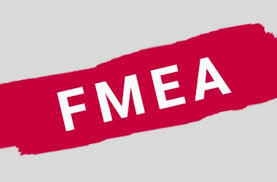What is the key difference between Optimization and Recommended Action (FMEA)?


You need to understand the difference between someone who speaks to you in their free time and someone who frees their time to speak to you: Unknown
Introduction
Recommendations play a very important role in our lives. Based on the recommendation, we can get a job, a new business opportunity or a life partner, provided the recommendation is appropriate and implementable.
Objective
The purpose of an FMEA process is to continuously improve the process to reduce risks. The FMEA is of course a living document and will be re-evaluated many times during its lifecycle.
The purpose of the product/process optimization is to determine the actions to mitigate risk and assess the effectiveness of those actions.
Detailed Information
FMEA (Failure Mode & Effect Analysis) is a team-oriented, systematic, qualitative and analytical method to identify, analyse and mitigate the technical risks related to the ‘product and manufacturing process design.
The FMEA is the ‘Before the Event’ and not the ‘After the Event’ exercise.
7 Step Process:
- Planning & Preparation: Objectives, Project identification, plan boundaries
- Structure Analysis: Process Item, Process step, process work element
- Function Analysis: Intended Function/Requirement
- Failure Analysis: Failure Effect, Failure Mode, Failure Cause
- Risk Analysis: Prevention and Detection Control, Severity/Occurrence/Detection
- Optimization: Recommended Actions, Responsibility, target date, revised S, O, D
- Result Documentation
- Failure Modes (FM): It means the ways, or modes, in which something might fail.
- Failure Effect (FE): It refers to studying the consequences of those failures’ mode.
- Failure Cause (FC): A indication of why failure mode could occur
- Severity (S): Severity of the Failure Effect (FE)
- Occurrence (O): Occurrence of the Failure Cause (FC)
- Detection (D): Detection of the Failure Cause (FE) and/or Mode (FM)
Prevention: Eliminate (prevent) the Failure Cause (FC) or the Failure Mode (FM) from occurring or reduce its rate of occurrence.
Detection: Identify (detect) the Failure Cause (FC) or the Failure Mode (FM) leading to the development of associated corrective actions.
Action Priority (AP)/RPN: Severity (S) X Occurrence (O) X Detection (D)
The key objective of ‘Action Priority’ is to choose, how to best prioritize the efforts to reduce the risk. The focus is not the prioritization of High, Medium or Low risk but the prioritization of the need for the action to reduce risk.
Key Difference Between Optimization & Recommended Action
Optimization: To determine actions to mitigate risk by improving the product/process and assess the effectiveness of those actions.
Key Objective:
- Identification of actions necessary to reduce the risk and increasing customer satisfaction by improving the product and process design
- Assignment of the responsibility and target date for action implementation
- Implementation and documentation of the action taken so that Failure Cause (FC) of the Occurrence (O) can be reduced and increasing the ability to Detect (D) the Failure Cause (FC) or Failure Mode (FM).
- Verifying the effectiveness of the implemented actions
- Assessment of the risk after action taken
- Collaboration between CFT and other relevant interested parties like the customer, supplier, process owner etc.
- The actions should be implementable and not potential actions which may never be implemented
The proposed actions should not be the same which are already planned and documented in the Preventive and Detection Controls.
The actions should have a responsible individual and target completion date.
If ‘No’ further actions are necessary, the remark should be ‘no further action is needed’.
Effectiveness sequence for the Optimization:
- Design/Process modification to eliminate/mitigate a Failure Effect (FE)
- Design/Process modification to reduce the Occurrence (O) of the Failure Cause (FC)
- Increase the Detection (D) ability for the Failure Cause (FC) or Failure Mode (FM)
- In the case of ‘Design/Process’ modification, all impacted Design Elements/process steps are evaluated again
- In the case of ‘Concept’ modification, all steps are evaluated again
Assignment of the Responsibilities:
- Each action should have a responsible individual and target date
- The proposed target date should be realistic
- The actual completion date for the Prevention and Detection Actions should be
documented
Status of Actions:
- Open: No action defined
- Decision Pending: Although action defined but not yet decided
- Implementation Pending: Although action decided but pending for approval
- Completed: Actions implemented effectiveness demonstrated and documented
- Not Implemented: When a decision is made to NOT implement an action. This may be due to risk related to the Practical and Technical Limitations beyond Current Capabilities
Assessment of Action Effectiveness:
- The status of the actions remains ‘Implementation Pending’ until the effectiveness has been tested
- The reassessment should be based on the effectiveness of the Preventive and Detection Actions taken
- When actions are completed, the existing Occurrence and Detection rating reassessed
- A new Action Priority may be determined
- If ‘No action taken’ the Action Priority (AP) should not be reduced.
- The original Severity (S), Occurrence (O) and Detection (O) rating should be available as part of the history
Recommended Action (FMEA 4th Edition):
- Preventive actions are preferable to Detection actions (Error proofing rather than a quality check)
- The key intent is to reduce the ranking in the order Severity, Occurrence and Detection
- Severity (S) Ranking reduction: Only a design or process revision and determining the effect on the product functionality/process can reduce the severity ranking
- Occurrence (O) Ranking reduction: By removing or reducing the cause of the failure mode through product or process design revision. By understanding, variation in the process through statistical study can also reduce the occurrence.
- Detection (D) Ranking reduction: The preferred method is error proofing. By understanding the dominant causes of the process variation and any special causes, the detection methodology can be redesigned.
Evaluation Includes
- Result of Process DOE (Design of Experiment)
- Modified process flow diagram, work instruction or preventive maintenance plan
- Review of equipment or fixtures specifications
Responsibility and Target date completion: Responsible person and proposed date
Action results: Result of the completed action and their effect on S, O, D ranking and RPN.
Action taken and completion date: Brief description of the action taken and actual date
Revised Severity, Occurrence and Detection ranking and RPN: Once actions are effectively verified and completed
Present Challenges
- How often the Recommended Actions are realistic and followed up for their effective implementation?
- How often are potential field failures identified through FMEA and its proposed recommended actions are input to Management Review?
References:
IATF 16949: 2016
FMEA Handbook (AIAG-VDA 1st Edition June 2019)
Industry Experts
This is the 124th article of this Quality Management series. Every weekend, you will find useful information that will make your Management System journey Productive. Please share it with your colleagues too.
In the words of Albert Einstein, “The important thing is never to stop questioning.” I invite you to ask anything about the above subject. Questions and answers are the lifeblood of learning, and we are all learning. I will answer all questions to the best of my ability and promise to keep personal information confidential.
Your genuine feedback and response are extremely valuable. Please suggest topics for the coming weeks.

Recent Comments